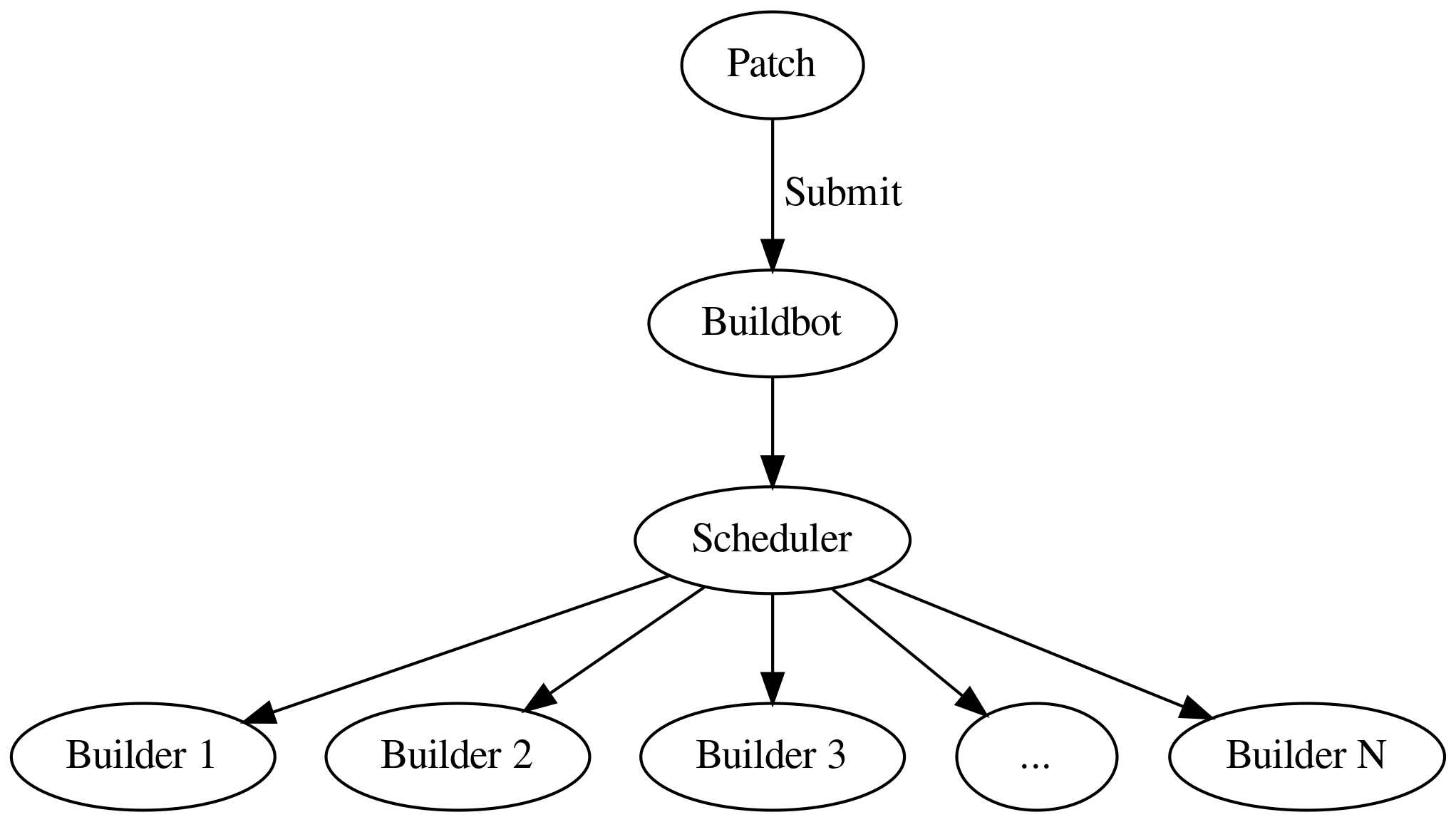4.2 KiB
4.2 KiB
GDB tests, CI & Buildbot BoF
License
- License: Creative Commons Attribution 4.0 International License (CC-BY-4.0)
- https://creativecommons.org/licenses/by/4.0/
Nomenclature
- Worker: The node that performs the “build”. Usually one per
physical machine/VM. For example,
fedora-x86_64-1orubuntu-aarch64. - Factory: A recipe of how to perform a build.
- Builder: An instance of a factory. For example,
Fedora-x86_64-m64orUbuntu-Aarch64-native-extended-gdbserver-m64. - Scheduler: Dispatches jobs to a set of builders. Can be triggered by specific events like a commit in a repository, a try build request or like a cronjob.
How was it?
- GDB Buildbot started in 2015 as a personal project.
- We just had 2 machines serving 4 Fedora
x86_64workers at the time. And no try builds!
- Initially it stored the test results in a git repository. This proved too inefficient over time…
And now?
- The master runs in a dedicated VM at OSCI (pen ource ommunity nfrastructure).
- Most of our builders support try builds!
-
14 workers (11 machines):
- Sergio (Red Hat): 2 machines (Fedora
x86_64) - Alan Hayward (ARM): 2 machines (Ubuntu
ARM 32and64) - Rainer Orth (CeBiTec.Uni-Bielefeld.DE): 2 machines (Solaris
amd64andsparcv9) - David Edelsohn: 3 machines (RHEL 7.1
s390x, AIXPOWER8and Debian Jessies390x) - Edjunior Machado: 1 machine (CentOS 7
PPC64LE) - Mark Wielaard: 1 machine (Fedora
s390x) - Kamil Rytarowski: 1 machine (NetBSD
amd64)
- Sergio (Red Hat): 2 machines (Fedora
- Test results are stored directly on-disk, and “garbage-collected” every week (tests older than 4 months are deleted).
How does it work?

How does it work?

Racy tests handling (or an attempt to)
- We keep a list of racy tests (detected weekly through the racy build analysis).
- When a racy build finishes, we include the racy tests in the
xfailfile for that builder.
- We then ignore them when doing normal test builds. However… whac-a-mole.
Test analysis (a.k.a. finding regressions)
-
Transform the current
.sumfile into a Python dict:{ 'gdb.base/test1.exp: name1' : 'PASS', 'gdb.base/test1.exp: name2' : 'FAIL', ...}
- Do the same for the previous
.sumfile.
-
Iterate over the current
.sumfile's dictionary and do:- If the current key is
XFAIL'ed (i.e., a racy test), ignore it.
-
If the current key exists in the new dict:
- If it has the same value, good (not a regression).
- If it changed from
PASStoFAIL, bad. Report as a regression. - If it changed from
FAILtoPASS, good. Update the baseline.
-
If the current key doesn't exist in the new dict:
- If it's a
PASS, good. Update the baseline. - If it's a
FAIL, bad. Report as a new failure.
- If it's a
- If the current key is
Notifications
- To gdb-testers: whenever we detect a possible regression in an upstream commit.
- To the author: on try builds, or when his/her commit broke GDB.
- To gdb-patches: when a commit breaks GDB.
- Breakage notifications are usually reliable. Regression notifications are not (just look at gdb-testers).
Problems and challenges
- Racy testcases. Perhaps the most difficult/persistent problem?
- Lots of test messages are non-unique. This makes it really hard to compare test results and find regressions.
- Better way to store and retrieve test results (current way is “enough” for what we need, but it can certainly be improved). See Serhei's work and Keith's work.
make -jN, racy tests andgdb.threads.